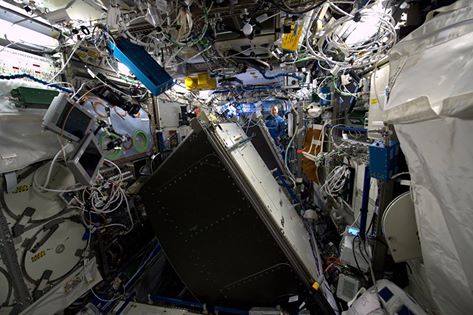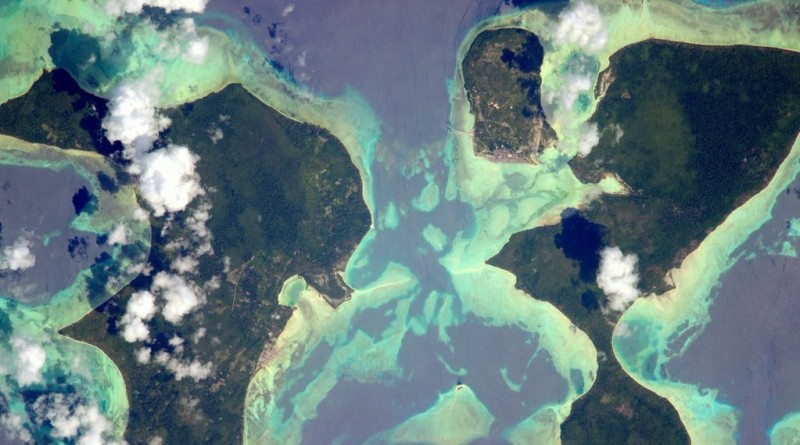ISS Operations Update – March 8, 2016

Experiments:
Rodent Research – Setup of Microgravity Science Glovebox [The Rodent Habitat enables rodents to be kept aboard ISS, delivering fresh air and nutrients to the animals and removing waste – enabling a variety of biological research to be conducted with mice or rats as model organisms. Two Rodent Research Missions were flown to ISS starting during Expedition 41. The next Rodent Transporter will head to ISS aboard Dragon SpX-8, looking at muscle atrophy and bone loss as a result of exposure to microgravity.]
Cognition [Cognition, also known as Individualized Real-Time Neurocognitive Assessment Toolkit for Space Flight Fatigue uses a battery of tests to measure how spaceflight-related physical changes (microgravity, lack of sleep quality, diet) can affect the cognitive performance of humans during long-duration space flights. The experiment consists of ten brief computer-based tests that cover a range of cognitive functions and deliver immediate feedback on current and past results. A good neurocognitive function for effective performance during space missions makes an investigation of sleep and fatigue in space an absolute necessity. The testing operation consists of a sleep questionnaire and subjective evaluations at the beginning followed by the ten tests that focus on: sensor-motor ability, visual object learning and memory, attention and working memory, abstraction, spatial orientation, emotion recognition, abstract reasoning, complex scanning & visual tracking, risk decision making, and vigilant attention and psychomotor speed.]
Matryoshka-R – Dosimeter Readings [Matryoshka-R consists of a number of radiation dosimeters that are set up inside the space station to assess radiation exposure of the crew relative to ISS position in its orbit and shielding provided by the modules.]
OASIS – Observation and Analysis of Smectic Islands in Space – Hardware Setup [“Observation and Analysis of Smectic Islands in Space” will study the unique behavior of liquid crystals in microgravity with special focus on their overall motion and merging of crystal layers which is known as the formation of smectic islands. Liquid crystals are widely used in technology, being employed in LCD TV screens, laptop screens, watches and other electronics with flat panel displays. The also find use in soaps and membranes. Studying liquid crystals in microgravity will provide new insights into two dimensional system physics of complex fluids. Findings may lead to understanding of well aligned, very high speed electro-optic devices that could find use in embedded ferroelectric liquid crystal micro-displays.]
Vzir Experiment Operations and Tagup [Vzir (Viewfinder) uses the SKPF-U (Photo Image Coordinate Reference System) hardware, a photo image coordinate reference system using ultrasound sensors and a camera for general target views.]
Matryoshka-R – Dosimeter Deployment [Matryoshka-R consists of a number of radiation dosimeters that are set up inside the space station to assess radiation exposure of the crew relative to ISS position in its orbit and shielding provided by the modules.]
Systems/Maintenance:
Nominal Inspections/Servicing Tasks (Morning Inspection, Caution & Warning Panel Check, Sozh System Maintenance) (Russian Crew)
Urine Processing Assembly: Distillation Assembly Replacement, Processing Cycle has been started and is looking nominal
C2V2: Tim Peake routed and installed data cables for the C2V2 (Common Communications for Visiting Vehicles) system, connecting internal radio and control equipment with external antennas, installed last year.
Tweets from Space:
From space it’s easy to see how nature has sculpted the landscape. #AfricaArt https://t.co/OwYVbV6yz0 pic.twitter.com/SAqJTo2yEq
— Tim Peake (@astro_timpeake) March 8, 2016
#GoodNight @Space_Station pic.twitter.com/A7dMQxq9Ba
— Tim Kopra (@astro_tim) March 8, 2016
I recognize these #islands – flying past #Hawaii . @Space_Station #Explore pic.twitter.com/ur0DCDYBac
— Tim Kopra (@astro_tim) March 8, 2016
#twins — small #islands in #Indonesia . @Space_Station #Explore pic.twitter.com/JhDnovBH2w
— Tim Kopra (@astro_tim) March 8, 2016
Don’t worry @NASA, @astro_tim and I have got this @Space_Station under control… now where did this cable go? pic.twitter.com/28rBqvAtvY
— Tim Peake (@astro_timpeake) March 8, 2016

